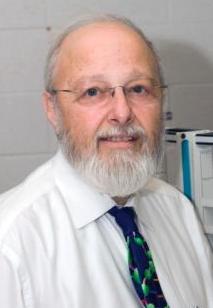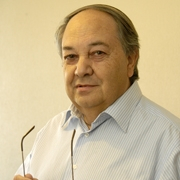Day 1 :
Keynote Forum
Charles J Malemud
Case Western Reserve University, USA
Keynote: Interleukin-6-mediated signal transduction in autoimmune disorders

Biography:
Charles J Malemud has received his PhD from George Washington University in 1973, and completed postdoctoral studies at the State University of New York at Stony Brook in 1977. Since 1977, he has been a Member of the Faculty at Case Western Reserve University School of Medicine where he is presently Professor of Medicine and Anatomy in the Division of Rheumatic Diseases and Senior Investigator in the Arthritis Research Laboratory. He has published more than 235 peer-reviewed papers, reviews and book chapters primarily in the fields of chondrocyte biology, extracellular matrix and signal transduction pathways. He is on the editorial board of several rheumatology, immunology and musculoskeletal journals and is Editor-in-Chief of the Journal of Clinical & Cellular Immunology and Global Vaccines and Immunology.
Abstract:
Interleukin-6 (IL-6) is one of several pro-inflammatory cytokines found at elevated levels in various autoimmune disorders such as rheumatoid arthritis (RA). In that regard, IL-6 was shown to play a prominent role in the pathogenesis and progression of RA. However, in order to establish how IL-6 could be involved in the progression of RA through its capacity to alter the function(s) of articular chondrocytes, we explored several relevant mechanisms by which IL-6 affected human chondrocytes in vitro. We found that incubating the C28/I2 line of immortalized human chondrocytes with recombinant human IL-6 (rhIL-6), the IL-6-like cytokine, rh-oncostatin M or the adipokine, rh-adiponectin caused phosphorylation (i.e. activation) of ERK1/2, p38α MAPK and JNK1/2. We also reported that rhIL-6 activated STAT-1, STAT-3 and STAT-5 without altering total STAT-1, -3 and -5, although STAT-1 was constitutively phosphorylated in another human chondrocyte line, T/C28a2. Matrix metalloproteinase-9 (MMP-9) plays a key role in RA by degrading cartilage extracellular matrix proteins. We found that rhIL-6 increased the synthesis of MMP-9 in the human chondrocyte lines. Of note, production of MMP-9 was inhibited by tocilizumab, a fully humanized monoclonal antibody which neutralizes the interaction of IL-6 with the membrane-bound IL-6 receptor-α/gp130 complex, membrane IL-6R or soluble IL-6 receptor (sIL-6R). Whereas the combination of rhIL-6 and sIL-6R significantly increased MMP-9 compared to sIL-6R, sIL-6R alone inhibited MMP-9 production by C28/I2 chondrocytes when compared to rhIL-6. This latter finding may be germane in the design of a future biological therapy for RA.
Keynote Forum
Sudhir Gupta
University of California, USA
Keynote: CD8+ Treg in health and primary immunodeficiency diseases

Biography:
Sudhir Gupta is a Professor of Medicine, Pathology & Laboratory Medicine, and Microbiology & Molecular Genetics, Chief of the Division of Basic and Clinical Immunology, and the Director of the Jeffrey Modell Diagnostic Center in Primary Immunodeficiencies at the University of California, Irvine. He also serves as Director of Scientific Development at the Sass Foundation for Medical Research in New York. Dr. Gupta received his medical and doctorate degrees from the King George's Medical College in Lucknow, India. Previous appointments include Associate Professor of Medicine and Immunology at the Weill Cornell Medical College, and Associate Member at the Sloan-Kettering Institute for Cancer Research, both in New York, New York. He is board certified in Clinical Immunology by the Royal College of Physicians and Surgeons of Canada; he is board certified in Allergy and Immunology, and Diagnostic Laboratory Immunology by the American Board of Allergy and Immunology. Dr. Gupta is a Master of the American College of Physicians. He has served on a number of committees for many leading governmental bodies and organizations, including the National Institutes of Health, the U.S. Food and Drug Administration, and the World Health Organization. He has made many original contributions in the field of cellular and molecular immunology as it relates to primary immunodeficiency diseases, AIDS, cancer research, and aging. These findings have been published in high-impact journals, including Science, Nature, the Proceedings of the National Academy of Sciences, the Journal of Experimental Medicine, the Journal of Clinical Investigation, the New England Journal of Medicine, and Aging Cell. Dr. Gupta has published more than 500 scientific papers, invited reviews, and book chapters. He has edited 24 books in various areas of cellular, molecular, and applied immunology, including one on primary immunodeficiency.
Abstract:
In past few years, seminal experiments in mice models of human diseases provided strong evidence of the presence of natural CD8+ T regulatory cells (CD8 Treg). The role of CD8+ Treg was subsequently shown in the control of several autoimmune disease models. Shi and associates have reported that human CD8+CXCR3+ (CD183+) T cells have same function as murine CD8+CD122+ Treg. We have investigated a role of CD8+ T cells in regulating various functions of autologous and allogeneic CD4+ T cells. CD8 T reg inhibit cell division and DNA synthesis of autologous CD4+ T cells, and differentiation of naïve CD4+ to effector memory CD4+ (TEM) and CD45RA+ terminally differentiated effector memory/exhausted CD4+ T cells (TEMRA). CD8+ Treg mediates their regulatory effect, at least in part, by IL-10 and MIP1β, and not due to direct cytotoxicity/apoptosis of CD4+ T cells. CD8+ T cells inhibit secretion IL-17A, IL-10, and IFN-γ by autologous CD4+ T cells. Furthermore, CD8 Treg inhibits induction of FoxP3 in CD4+ T cells. Therefore, CD8+ Treg are regulators of regulatory CD4+ T cells. CD8+Treg were further characterized phenotypically, and appear to be CD8+CCR7+CD25hiICOS+CTLA-4+FoxP3+ phenotype. CD8+ Treg in primary immunodeficiency diseases and human aging will be discussed.
Keynote Forum
Michael A Tainsky
Wayne State University School of Medicine, USA
Keynote: Paraneoplastic antigens as biomarkers for early detection and prediction of recurrence of ovarian cancer

Biography:
Michael A Tainsky earned his bachelor’s degree with honors in chemistry at New York University in 1971 and his PhD in Molecular Biology at Cornell University, Ithaca, NY in 1977. He came to the Barbara Ann Karmanos Cancer Institute in 1998 after 13 years on the faculty of the MD Anderson Cancer Center in Texas. As Director of Molecular Biology and Genetics he has developed programs that are a fusion of community outreach, laboratory research and clinical diagnostics research. He has published over 140 scientific papers and holds the Barbara and Fred Erb Endowed Chair in Cancer Genetics. He has mentored the research training of 40 graduate students and fellows. He is on the editorial board of 6 scientific journals. He has been the recipient of more than 25 peer-reviewed research grants. His lab has been studying molecular genetic mechanisms by which cells convert from normal to cancer since 1985. Over the past 10 years his research has focused on the development of novel cancer diagnostics tests for the early detection of cancer in the form of a complex blood test.
Abstract:
Routine disease monitoring of ovarian cancer patients is generally recommended by gynecologic oncologists for women from high-risk families and for ovarian cancer patients during after the completion of primary surgery and first-line chemotherapeutic treatments. The recurrence is determined by measuring the level of serum CA125, one of the most extensively used tumor biomarkers in standard clinical practice for disease surveillance. Numerous studies have shown the role of tumor autoantibodies as biomarkers for ovarian cancer diagnosis and its recurrence. These autoantibodies to tumor associated antigens (TAAs) arise due to the generation of humoral immune response before evidence of clinical symptoms in cancer patients. Previously we showed that a 3 biomarker panel predicted ovarian cancer recurrence at a median lead time of 9.07 months with 94.7% sensitivity, 86.7% specificity, and 93.3% accuracy, in a cohort of ovarian cancer patients where normalization of CA125 had occurred after the surgery and completion of chemotherapy. One of those biomarkers was a peptide epitope from a known paraneoplastic antigen, HARS. Paraneoplastic antigens can elicit a humoral immune response in cancer patients as these antigens are expressed in the cells of nervous system and tumor. The appearance of these onconeural antibodies in ovarian cancer patients leads to the development of various neurological disorders called paraneoplastic syndromes, particularly dermatomyositis or polymyositis but can precede the occurrence of dermatomyositis or polymyositis. Although the clinical implication of these onconeural antibodies as biomarkers for early diagnosis of ovarian cancer has been reported in many case studies, the usefulness of these antibodies has yet to be evaluated in monitoring disease status in ovarian cancer patients after cytoreductive surgery and chemotherapy treatments. In the present study we evaluated the role of a panel of 3 recombinant paraneoplastic antigens, HARS, CDR2 and Ro52 in combination with 3 of our previous biomarkers in predicting recurrence in new and independent cohort of ovarian cancer patient population in which most of the patients had no elevation in CA125 level months before their clinical recurrence. Our results indicate that autoantibodies to HARS, Ro52 and CDR2 and 5H6 antigens predicted ovarian cancer recurrence 5.03 months before the clinical or symptomatic relapse in 21 ovarian cancer patients with a sensitivity of 90.5% when CA125 levels were below the standard cutoff (35 U/ml). We have expanded the biomarker panel and test a larger sample size for the early detection of ovarian cancer using a newly developed ELISA protocol employing a large number of sera from patients and women with benign gynecological diseases.
Keynote Forum
Periasamy Selvaraj
Emory University School of Medicine, USA
Keynote: Designing tumor immunotherapy amidst tumor heterogeneity
Time : 10:30-11:00

Biography:
Periasamy Selvaraj has received his PhD in India and did his Postdoctoral in Immunology at Dana Farber Cancer Institute, Harvard Medical School, USA. Currently, he is a Professor of Pathology in the School of Medicine of the Emory University at Atlanta, GA. He has published more than 90 research papers in national and international journals. He also serves as Chief Scientific Officer and Co-Founder of Metaclipse Therapeutics Corporation, a biotech company focusing on developing personalized immunotherapy for metastatic cancer.
Abstract:
Cancer is a highly heterogeneous disease and mutations that occur in genes and vary patient to patient. Further, recent studies using deep sequencing technology reveal that tumor tissue exhibit high degree of intratumoral heterogeneity harboring multiple clonal populations with the tumor. Therefore, the use of established cell lines as therapeutic vaccines may not represent all the clonal populations and will not be efficacious. Our laboratory has pioneered the development of a therapeutic cancer vaccine design that uses tumor membrane vesicles (TMVs) prepared from tumor tissue and a novel protein transfer technology to adjuvantate them. Using this approach it is feasible to develop cancer vaccines from surgically removed tumor tissues which incorporates all the antigenic variations found in the tissue. In this technology, immuno stimulatory molecules are attached to a glycolipid and then tethered to tumor membranes by a short-incubation, thus eliminating the need for gene transfer or live cells to develop cancer vaccines. The immuno stimulatory molecules incorporated onto tumor membranes serve as adjuvants to boost antitumor immunity against tumor-associated antigens expressed on cancer cell membranes. Experiments using mouse models of cancers have shown that membrane-based cancer vaccines prepared by protein transfer technology can protect mice from live tumor cell challenge suggesting that membrane-based cancer vaccines induce protective antitumor immunity. This personalized therapeutic vaccine approach has the potential to treat cancers where the target antigen is yet to be identified.
Keynote Forum
R B Maccioni
University of Chile, Chile
Keynote: The neuroimmunomodulation theory of Alzheimer´s disease

Biography:
R B Maccioni is a Professor of Neurology and Neurosciences, University of Chile and Director of the International Center for Biomedicine. Hi did his Doctoral degree in 1974, postdoctoral and visiting scholar at NIH and Max Plank Institute. He is Associate Professor at CU University Medical School. He is a world class scientist with leading contributions to biology of neuronal cells, tau protein and neuro-immuno-modulation in AD, in vivo neuroimaging technology and biomarkers for AD diagnosis. He has served as Editor of several journals, author with George Perry of the book “Current Hypotheses and Research Milestones in Alzheimer´s Disease”, outstanding achievements in the training of more than 60 scientist (MD´s & PhD´s), author of 176 publications and seven books. His scientific findings are characterized by innovative approaches to elucidate complex problems of modern medical research. He has received important international prizes, including awards from Alzheimer´s Association, Milheim foundation, and he is a Presidential Chair in Science, Chancellor´s Medals and Doctor Honoris Causa at several universities.
Abstract:
Alzheimer’s disease (AD) is a progressive neurodegenerative disease, the most common cause of dementia in senile population, characterized by behavioral disorders, loss of memory and cognitive impairment. According to the World Health Organization, AD represents around 12% of people over 65 worldwide. On the basis of the two main protein aggregates, neurofibrillary tangles (NFT) and amyloid plaques (AP), several attempts to explain the genesis of the disease have been proposed. Current research indicates that pathological hyperphosphorylated forms of the microtubule-associated protein tau, is the main precursor for AD onset, with a paramount molecular mechanism based on neuroinflammatory processes. We have postulated the neuroimmunomodulation theory. In this context, microglial cells that play preponderant roles in innate immunity are the main source of proinflammatory factors in the brain. Microglial activation triggers alterations in the cross-talks between microglia and neuronal cells in AD pathogenesis. This activation depends on the type, intensity and context of the stimulus. In neurodegenerative diseases such as AD, a persistently active microglial condition could generate neuronal damage, with a consequent death of neuronal cells, causing the release of pathological tau toward the extracellular environment. Released tau would subsequently cause the activation of microglial cells,
promoting a feedback mechanism and generating a continuous cellular damage. After activation of microglia is induced, generation of NF-kB occurs, thus promoting the expression and release of proinflammatory cytokines, such as interleukin-1β (IL-1β), interleukin-6 (IL-6), interleukin-12 (IL-12), interleukin-18 (IL-18), interferon gamma (IFN-γ) and tumor necrosis factor alpha (TNF-α). As a consequence, short-lived cytotoxic factors, such as superoxide radicals (O2), nitric oxide (NO) and other reactive oxygen species (ROS), are released. In normal physiological conditions, tau’s kinases have a role in regulating normal functions of tau. Pathological tau hyperphosphorylations by the p35-activated cyclin-dependent kinase 5 system (Cdk5) reduce tau-microtubule interaction, downregulating tau function in microtubule stabilization and axonal transport. On the other hand, glycogen synthase kinase 3-beta (GSK3β)-mediated tau phosphorylation promotes N-methyl-D aspartate receptor (NMDAr)-mediated long-term depression (LTD). It has been shown that increasing the release of proinflammatory cytokines during AD by microglia leads to an increase in kinase expression and activity of both Cdk-5 and GSK3-β. On the other hand, TNF-α and IL-8 increase expression and kinase activity of Cdk5, whereas IL-1β hyperactivates GSK3-β, leading to tau hyperphosphorylations. These result in microtubule destabilization, impaired axonal transport, NMDAr-mediated neurotoxicity, synaptic dysfunction and finally in cell death. Finally, the previously summarized mechanisms could explain the onset and progression of AD, opening a new projection to focus research on therapeutic agents that could modulate the interactions between tau and microglial cells. The neuroimmunomodulation mechanisms have been the basis toward the search of innovative therapeutic approaches for AD using tau as a main target.
- Novel Vaccines for Infectious Diseases | Immunology and Diabetes | Cancer and Tumor Immunobiology | Neuroimmunology | Novel Vaccines for Cancer | Mucosal immunology
Location: Piedmont I & II

Chair
Charles J Malemud
Case Western Reserve University, USA

Co-Chair
Martin J D’Souza
Mercer University, USA
Session Introduction
Rangaiah Shashidharamurthy
Philadelphia College of Osteopathic Medicine, USA
Title: Lipocalin2, an innate immune protein, deÞ ciency pre-dispose mice to pro-inß ammatory condition
Biography:
Rangaiah Shashidharamurthy has completed his PhD from University of Mysore, Karnataka, India and postdoctoral studies from Vanderbilt and Emory University. He is an Associate Professor of Department of Pharmaceutical Sciences, PCOM-School of Pharmacy, Georgia campus. He has published more than 38 papers in peer reviewed journals and also serving as an external reviewer and Editorial Board Member for many of the international peer reviewed journals. His research interest is in investigating the pathogenesis of chronic autoimmune/inflammatory disorders such as vasculitis and arthritis.
Abstract:
Lipocalin 2 (Lcn2), a 25KDa innate immune protein, known to be significantly up regulated in various inflammatory disorders including antibody-mediated arthritis, yet its biological role remains unclear. More recently, our studies have suggested that the regulation might be necessary for the resolution of inflammatory process. However, the exact mechanism involved in this process is still unknown. In this study, we have investigated the anti-inflammatory function of Lcn2 using RAW 264.7 cells (murine mouse macrophages) and Bone marrow derived macropahges (BMDMs). To determine the anti-inflammatory effects of Lcn2, an ELISA revealed that M2 macrophages in the presence of recombinant Lcn2 (rLcn2) significantly increased the expression of IL-10. However, RAW 264.7 cells treated with Lcn2 alone did not exert either pro- or anti-inflammatory effect. BMDMs from Lcn2 deficient mice exhibited increased INF-g induced STAT-3 activation but not the STAT-6. In addition, rLcn2 inhibited the RANKL-induced osteoclast (bone resorbing cells) formation. In conclusion, our data indicates that Lcn2 deficiency promotes the pro-inflammatory response through STAT-3 pathway. Furthermore, Lcn2 promotes anti-inflammatory function by potentiating the polarization of macrophages towards M2 phenotype and anti-inflammatory cytokine secretion. In addition, Lcn2 deficiency also increases RANKL-mediated osteoclast formation from its precursor cells. Taken together, these studies suggest that Lcn2 inhibits inflammation as well as excessive bone erosion conceivably through STAT-3 pathway during autoinflammatory conditions.

Biography:
Martin D’Souza has obtained his PhD degree from the University of Pittsburgh, PA, USA. He is a Professor and Director of Graduate Programs in the College of Pharmacy at Mercer University in Atlanta, Georgia. He also serves as the Director of the Clinical Laboratory and Co-Director of the Center for Drug Delivery Research. He has graduated over 50 PhD students and has published over 100 manuscripts. He has been the recipient of several research grants from the National Institutes of Health (NIH), the American Diabetes Association, the Georgia Cancer Coalition, and Georgia Research Alliance. He serves on several Editorial Boards and is a journal reviewer for over 10 scientific journals and has several patents issued in the area of Nanotechnology.
Abstract:
We have been working on designing and developing nanovaccines for infectious diseases at the Nanotechnology Laboratory at Mercer University. In particular, we focus on particulate vaccines that offer several advantages over the traditional vaccines, such as superior vaccine stability, the avoidance of cold-chain requirements, and the ease of manufacture. Further, the overall enhanced immune response due to a combination of factors, such as slow release of antigen from the particles and superior uptake into antigen presenting cells of the immune system, makes particulate vaccines the preferred choice of vaccine delivery. The availability of safe bio-degradable and bio-compatible polymers enhances its suitability for human use. Novel delivery of microparticulate vaccines such as transdermal delivery using microneedles and laser ablation, nasal delivery, buccal delivery, and oral delivery of vaccines, amongst others, will also be discussed. Several examples of successful delivery of particulate vaccines in the areas of infectious diseases such as gonorrhea, RSV, influenza, will be discussed.
Amit Bansal
Mercer University, USA
Title: Cationic pDNA vaccines for immuno-contraception and rabies control

Biography:
Amit Bansal has completed his MS in Pharmaceutical Sciences from Temple University and currently pursuing PhD at Mercer University College of Pharmacy. His research work at Mercer University was focused on development and evaluation of nanoparticulate vaccine as delivery vehicle thereby achieving sustained release of the vaccine with the aid of biodegradable polymers. He has prior research experience in the formulation development of immediate and modified release dosage forms, chemical modification of polymers and on the permeability of anticancer drugs across blood brain barrier (BBB). He has published one research paper, and is co-author of one review article and a book chapter.
Abstract:
Plasmid DNA (pDNA) vaccines have the potential to elicit an immune response against a wide range of diseases. However, the limitation of poor uptake of pDNA to antigen-presenting cells and rapid degradation of pDNA encapsulated in nanoparticles prompted us to fabricate an encapsulation free pDNA nanoparticulate vaccine. The negatively charge pDNA adsorbs on cationic PLGA (poly (d, l-lactide-co-glycolide)-chitosan nanoparticles and were used as means to deliver pDNA. Nanoparticles in the size range of 380-500 nm with a zeta potential of 50.0 mV were prepared using emulsification method. pDNA PLGA-chitosan nanoparticles were dispersed in poloxamer 407 that possess fluid property at 4oC and turns into gel at body temperature. Binding affinity of pDNA to cationic nanoparticles depends on pDNA to nanoparticles ratio (P/N) and complete immobilization of pDNA to cationic nanoparticles was achieved at a P/N ratio of 1/50. pDNA adsorption efficiency of 99.0 percent was achieved in pDNA PLGA-chitosan nanoparticles prepared using chitosan glutamate concentration of 2 mg/mL. Complex of pDNA and cationic nanoparticles was well tolerated and maintained cell survival rate greater than 80.0 percent. Additionally, cellular uptake was found to be both time and concentration dependent and followed saturation kinetics with Vmax of 11.389 µg/mL.hr and Km value of 139.48 µg/mL. In-vitro release study of P/N, 1/50 showed that the nanoparticulate vaccine can sustain the release of pDNA up to 24 hours. In our study, we demonstrated that pDNA PLGA-chitosan nanoparticles were non-cytotoxic, showed enhance cellular uptake, and sustain the release of pDNA for extended period.
Bernadette D’Souza
Samford University, USA
Title: Optimizing DC targeting by activation of the three signal pathway for immunotherapy in Melanoma
Time : 12:50-13:10

Biography:
Bernadette D’Souza is currently working as an Associate Professor at the McWhorter School of Pharmacy. She is a Formulation Scientist, working with cancer antigens and immunotherapy approaches using novel formulations. She has experience of working with formulations and targeted delivery systems for various routes of administration including oral, transdermal and injectable routes. She has expertise in various bioanalytical tools such as ELISA, LUMINEX, cell analysis using the cell analyser, etc. She has mentored over 10 students in the PharmD Program and has published in several peer-reviewed journals and presented at international conferences.
Abstract:
In this project, we have evaluated the potential of Na-alginate as the polymer matrix for controlled release of tumor associated antigens (TAAs) and measured the immunotherapeutic efficacy of the formulation to stimulate a cytokine dependent T-cell response. We have measured the three signal pathways activation by dendritic cells which would result in T-cell stimulation. Different immunostimulatory adjuvants were screened and optimized for increasing dendritic cell (DC) stimulation using cytokine release as the outcome. The best immunostimulatory adjuvants were combined with the tumor antigens and incorporated into the particulate formulation. An ex-vivo study with murine DCs derived from bone marrow and T-cells from splenocytes and lymph nodes in co-culture was carried out to determine the effect of the formulation on activating the three necessary signals for effective communication between the innate and adaptive immune system. We have further screened herbal products for IL-12 response to use as an adjuvant in the delivery system.
Keegan Braz Gomes
Mercer University, USA
Title: Immunotherapeutic approaches for the treatment of drug addiction

Biography:
Keegan Braz Gomes has completed his Bachelor’s degree in Biology from University of Massachusetts, Amherst and is currently a PhD Candidate in Pharmaceutical Sciences at Mercer University.
Abstract:
In recent years, there has been an increase in the abuse and addiction of designer recreational drugs, such as MDPV (Methylenedioxypyrovalerone) and alpha-PPP (α-pyrrolidino propiophenone). These psychostimulant drugs, more commonly referred to as “bath salts”, are synthetic cathinones seen as a cheap alternative to other stimulants such as methamphetiamine and cocaine. Bath salts can result in many adverse effects including increased heart rate, depression and death. In order to combat the abuse of bath salts, we developed a therapeutic microparticulate vaccine to reduce the effects of various psychostimulant drugs/their analogs on the brain. We characterized the drug taking effect as an increase in locomotory activity. Mice were injected with varying doses of the drug to establish a dose-effect curve for locomotory activity. Next, we formulated the anti-drug vaccine using two approaches: drug encapsulation within BSA (bovine serum albumin) matrix and creating microparticles and drug conjugation to BSA and creating microparticles. After vaccination, using the dose-effect curve as a guide, we injected the mice with the pure drug and correlated the changes in locomotory activity to vaccine efficacy for both approaches. Effective immunization across doses would result in a decrease in locomotory activity indicating a production of antibodies that bind specifically to the drug thereby, neutralizing the effects of the drug on the body. We will validate antibody response (innate and adaptive) and production using a series of in vitro studies including nitric oxide assays and anti-drug binding ELISAs.
Kimberly Braz Gomes
McMaster University, Canada
Title: Evaluation of a matrix protein virus-like particle (m2e vlp) subunit vaccine for influenza

Biography:
Kimberly Braz Gomes has completed her BSc in Neuroscience at Brock University and did her PhD in Pharmaceutical Sciences at Mercer University. She is currently a Post-doctoral fellow at McMaster University.
Abstract:
The purpose of this study was to investigate the efficacy and protection of the M2e VLP particulate vaccine administered transdermally in a pre-clinical mouse model for influenza. The M2e VLP was adsorbed onto Alhydrogel® and encapsulated into a polymer matrix with MPL-A®. For animal experiments, 4-6 week old male C57BL/6 mice (Charles River Laboratories, Wilmington, MA) were used. One prime (Week 0) and two booster (Week 3, 6) doses were administered to mice intramuscularly (I.M.) or transdermally (T.D.) using the AdminPatch® 1200 microneedle array. Mice were intranasally (i.n.) challenged with A/Phillipines/2/82 (H3N2) (4x103 PFU) live influenza virus on week 12. Blood samples were collected for detection of antibody titers every 3 weeks (Weeks 1, 4, 7 and 10). Animals were sacrificed at week 14 and T cell phenotypes were examined in the primary (bone marrow) and secondary lymphoid organs (spleen and lymph node). The whole lung tissue was isolated after challenge and homogenates were examined for determination of viral load. The microparticle yield was found to be 92% and the encapsulation yield was around 84% with a size of approximately 1.85μm. The M2e VLP, M2e VLP MP and M2e VLP MP + MPL-A® + Alhydrogel® showed elevated levels of IgG beginning at week 7, demonstrating that the M2e VLP is immunogenic. IgG1 antibodies were elevated in the M2e VLP MP + MPL-A® + Alhydrogel® and there were also levels of IgG 1 present in the M2e VLP and inactivated H1N1 vaccinated groups. The adjuvant group showed increased levels of Th1 related subclass IgG2a compared to M2e VLP MP and M2e VLP formulations. Mice that were immunized with the M2e VLP MP and M2e VLP MP + MPL-A® + Alhydrogel® had high expression of CD4+ T cells in the spleen and the lymph node. The M2e VLP MP + MPL-A® + Alhydrogel® showed high levels of CD8+ cells in the lymph node and there were very low levels of effector CD4+ and CD8+ T cells present in the bone marrow. The viral titer was shown to be 10-fold lower in the M2e VLP MP + MPL-A® + Alhydrogel® vaccinated mice compared to M2e VLP and M2e VLP MP. Since the current licensed vaccines against influenza are facing numerous challenges associated with production time, antigenic changes, route of administration, etc, we developed an extracellular domain matrix 2 protein virus-like particle (M2e VLP) micro particulate vaccine that is easy to formulate and is stable, immunogenic, safe and protective.
Lotika Bajaj
Mercer University, USA
Title: Formulation and evaluation of novel particulate vaccine against Gonorrhea

Biography:
Lotika Bajaj is a PhD student in the Department of Pharmaceutical Sciences, Mercer University, Atlanta. She completed her Masters of Pharmacy from Punjabi University, India. As a graduate Student in the Vaccine Nanotechnology Laboratory at Mercer University, her area of research is particulate vaccines against infectious diseases.
Abstract:
Gonorrhea is one of the most common sexually transmitted infections caused by Gram-negative Diplococcus bacteria, Neisseria gonorrhea. In 2009 301,174 cases of gonorrhea were reported in the US which accounts for 99.1 cases per 100,000 people. Patients suffer from symptomatic urethritis and cervicitis, pelvic inflammation, pus discharge, abdominal pain and dyspareunia. The treatment for gonorrhea involves use of antimicrobials but development of drug resistance is a great threat to public health and therefore novel methods for prevention of gonorrhea infection are needed. In the present study, we formulated microneedles to deliver and evaluate efficacy of dead gonorrhea bacteria in microparticles as vaccine through transdermal route. N. gonorrhoeae were grown in GC Broth. Bacteria were then harvested by centrifugation and three washings were done using PBS solution followed by centrifugation to concentrate bacterial suspension. This concentrated bacterial suspension was used to prepare vaccine microparticles using pre-crosslinked BSA. To this solution, concentrated bacterial suspension was added and microparticles were prepared by spray drying using a 0.5 mm nozzle at 120°C, 100% aspirator and 20 ml/h speed. The microparticles obtained were characterized. The percent yield for vaccine particles was 89% w/w. The size of the particles was determined by using Malvern Zetasizer, vaccine particles were 4.5 um in size and poly dispersity index (PDI) was 0.447. The charge on the particles was -25.1±5.79 mV. Vaccine particles were successfully prepared and characterized for yield, size, PDI and charge. Future studies will involve evaluation of this particulate vaccine for inducing an immune response in in-vitro and in-vivo studies.
Rikhav P Gala
The University of New Mexico, USA
Title: Design and development of ovarian cancer vaccines

Biography:
Rikhav Gala is a Research Scientist in the department of Pharmaceutical Sciences at the University of New Mexico, Albuquerque. His area of interest are formulations of dosage forms for small and large molecules. He has worked on the formulation and mechanistic characterizations of vaccines. He has worked on ovarian cancer immunotherapy which was NIH funded. This talk is focused on the ovarian cancer vaccine for delivery via the transdermal route using microneedles patch. He has a PhD and an MSc in Pharmaceutical Sciences.
Abstract:
The aim of this study was to monitor cell-based immune response developed by microparticulate ovarian cancer vaccine when administered via dissolving microneedles for transdermal routes in murine models and correlate it with tumor retardation observed in tumor challenge study. Immunotherapeutic strategies may serve as an alternative method to control the recurrence or progression of ovarian cancer. Therefore, we propose here microparticulate vaccine to treat as well as to prevent ovarian cancer. This vaccine resulted in tumor retardation when challenged with live tumor cells. Recently, we conducted a study to understand the mechanism by which the vaccine worked, where we compared humoral and cellular immune response with tumor suppression observed. We also checked the efficacy of the adjuvants to improve the efficacy of the vaccine. The microparticles were made up of cellulose polymers such as HPMC, CPD and EC. Alum and MF59 were used as adjuvants to enhance the immune response. The microneedles were formulated using polymers such as HPMCAS and PVA along with sugars such as maltose and trehalose for their dissolving properties. We have demonstrated the efficacy of vaccine microparticles containing whole cell lysate of ID8 ovarian cancer cells in retarding tumor growth in murine models. Spray drying process and the formulation used for this purpose could retain the immunogenicity of vaccine resulting in T-cell response. Thus, the microparticulate vaccine provides a promising approach in terms of cost-effectiveness, ease of production and patient compatibility.
Nihal S Mulla
Drake University, USA
Title: Adjuvanted allogeneic breast cancer vaccine: Maximizing cancer treatment by modulating the host immunity

Biography:
Nihal S Mulla has completed his PhD from Mercer University, Atlanta and Master’s in Pharmaceutical Sciences from Creighton University, Omaha. He has presented at several international conferences and published in reputed journals and publication houses. He is an active Member of the American Association of Pharmaceutical Scientists and American Association of Colleges of Pharmacy.
Abstract:
The aim of this study was to formulate and test the immunogenecity and efficacy of orally delivered microparticle based therapeutic adjuvanted breast cancer vaccines. CpG and cyclophosphamide were used as adjuvant and T-reg inhibitor respectively in order to maximize the immune response against tumor associated antigens (TAA’s). Allogeneic breast cancer vaccine was obtained by preparing a whole tumor lysate consisting of all the TAA’s of 4TO7 murine breast cancer cell line. Cellulose based vaccine microparticles containing TAA’s and CpG were prepared by spray drying (Buchi 190). Antigenicity of the vaccine mp’s was evaluated by a dendritic cell culture based assay. As part of the therapy, four-eight week old female Balb/c mice received oral vaccine microparticles as well as the adjuvant CpG and T-reg inhibitor cyclophosphamide (50 mg/kg; i.p). To asses the in vivo efficacy of vaccine mp’s, all the animals were challenged with 106 breast cancer cells subcutaneously. Tumor growth was monitored and immune organs like spleen, lymph node and bone marrow were collected for investigating the type of immune response generated. The particles were found to be in the size range of 4-5 µm with a zeta potential of +20±5 mV. According to in vitro studies, adjuvanted vaccine particles induced the highest immune response and showed maximum survival when compared to groups receiving blank particles. The findings proved that particulate nature of vaccine helps in better uptake of antigens by immune cells and immune recognition due to the presence of toll like receptor 4 (TLR-4) agonist, CpG.
Amit Bansal
Mercer University, USA
Title: Bio-fabrication and evaluation of alginate chitosan microcapsules of Insulin secreting β TC-6 cells in the treatment of Type 1 diabetes mellitus
Time : 15:35-15:55

Biography:
Amit Bansal has completed his MS in Pharmaceutical Sciences from Temple University and is currently pursuing his PhD at Mercer University, School of Pharmacy. His research work at Mercer University is focused on the development and evaluation of nanoparticulate vaccine as delivery vehicle thereby, achieving sustained release of the vaccine with the aid of biodegradable polymers. He has prior research experience in the formulation development of immediate and modified release dosage forms, chemical modification of polymers and on the permeability of anticancer drugs across blood brain barrier (BBB). He has published one research paper, and has been the Co-author of one review article and a book chapter.
Abstract:
Type 1 diabetes mellitus (T1DM) is a disease, characterized by lack of pancreatic islet function. Whole tissue transplantation appears to be viable alternative in the management of T1DM due to limitation of exogenous insulin therapy. Th is study aims at fabrication and evaluation of alginate-chitosan microcapsule encapsulated insulin secreting β TC-6 cells using specialized spraying
nozzle. Microcapsules encapsulated with β TC-6 cells were fabricated using novel spraying device producing uniform spherical microcapsules. Microcapsules were characterized for permeability using molecular weight markers, stability, and cell viability using live dead staining kit. Microencapsulated β TC-6 cells were transplanted intra-peritoneally in streptozotocin (STZ) induced diabetic mice and monitored for decrease in blood glucose level and immune acceptance. Spherical microcapsules with diameter in the range of 250-350 μm were prepared at an air fl ow rate of 250 L/hr. Microencapsulated β TC-6 cells in alginate capsules demonstrated prolonged viability. Mice in microencapsulated cells group received microencapsulated β TC-6 cells maintains normoglycemia for 35±5 days before rejection. However, mice in unencapsulated cells group received naked β TC-6 cells rejected graft within 1 or 2 days and exhibit both cellular and humoral immune responses. CD4 T-cells mediated Th 2 response i.e. humoral response was predominant in microencapsulated β TC-6 cells group and that was further confi rmed from elevated levels of CD45R. Microcapsules produced by specialized nozzle were reproducible with narrow size distribution and in addition provides fl exibility in producing diff erent sized capsules. Our fi ndings for in-vivo study revealed that transplantation of microencapsulated β TC-6 cells may be a viable
alternative in the management of T1DM with greater immune acceptance.
Rikhav P Gala
University of New Mexico, Mexico
Title: Formulation and testing of novel particulate vaccines for measles

Biography:
Rikhav P Gala is a Research Scientist–1 in the Department of Pharmaceutical Sciences at the University of New Mexico, Albuquerque. His area of interest are formulations of dosage forms for small and large molecules. He has worked on the formulation and mechanistic characterizations of vaccines. He has a PhD and an MSc in Pharmaceutical Sciences.
Abstract:
Measles is a highly contagious infection that is caused by the measles virus. It mainly affects children and can be fatal as well. The disease causes about 100,000 deaths every year worldwide, although it is completely preventable by vaccines. It affects people primarily in the developing areas of Africa and Asia causing the most vaccine-preventable deaths of any disease. Since the primary targets of this disease are children, we aimed at formulating an oral vaccine that would prevent the use of needles, making the vaccine more patient-compliant. The oral cavity of the mouth is covered by a lining that is rich in immune cells. These immune cells help the body to distinguish between harmful and harmless foreign material entering the body through the mouth. Oral disintegrating films (ODF) are films that dissolve when placed in the mouth. These films can be an inexpensive and an effective means to deliver drugs/vaccines orally without the use of needles. On dissolution, the microencapsulated vaccine antigen will be recognized by the immune cells in the mouth and further processed to produce protective antibodies against measles virus. Later, whenever the body is exposed to the virus, the protective antibodies present will be capable of combating the measles infection. The goal of this study was to explore the potential of oral disintegrating films (ODF) loaded with measles vaccine nanoparticles as a viable immunization strategy. In this preliminary study, two pigs were used in the in-vivo model in order to evaluate the immunogenicity of the measles vaccine formulation when administered via the buccal route using ODFs.
Rokon Uz Zaman
Mercer University, USA
Title: Development and characterization of a microparticulate vaccine formulation for metastatic breast cancer

Biography:
Rokon Uz Zaman is working as a PhD Student in the Department of Pharmaceutical Sciences, Mercer University, Atlanta. He has completed his MS in Microbiology from University of Dhaka, Bangladesh. As a Graduate Student in the Vaccine Nanotechnology Laboratory at Mercer University, his research is focused on targeted drug delivery using nanoparticulate vehicles.
Abstract:
Breast cancer is the most fatal form of cancer in females. Even with early diagnosis, 20% of women still develop metastases. Immunotherapy is being explored to provide a better treatment option, as current therapies against breast cancer are mostly invasive and pose numerous adverse effects. With this in mind, our purpose has been to formulate and evaluate a micro particulate therapeutic vaccine to provide a new line of therapy for metastatic breast cancer. Murine breast cancer cell line 4T1 was used as source of antigens. Vaccine microparticles were prepared by encapsulating 4T1 tumor associated antigens in cellulose polymer using spray dryer technology. Total protein concentration of the whole cell lysate was determined by Bio-Rad total protein assay. In vitro characterization of microparticles was conducted. In vitro innate immune response was determined by performing nitric oxide assay. Expression of surface co-stimulatory molecules on dendritic cells treated with vaccine microparticles and other controls were determined by flow cytometer using different markers (CD40, CD80, MHCI and MHC II). The yield of the microparticulate vaccine, following spray drying was 80±5% w/w. Total protein content of whole cell lysate was 3.48±1.25 mg/mL. The particle size was 1-4 µm. Zeta potential was -7±2 mV. There were significantly higher amount of nitric oxide released in the supernatant of cells exposed to vaccine microparticles compared to blank microparticles. CD40, MHC II and CD80, MHC I expression were significantly higher in the vaccine microparticles group compared to blank microparticles and vaccine suspension group.
Sucheta D’Sa
Charles River Laboratories, USA
Title: Promising immunotherapeutic strategies for RSV infection
Time : 16:55-17:15

Biography:
Sucheta D’Sa is currently a Research Scientist I in the Analytical Chemistry Department at Charles River Laboratories, Ashland, Ohio and serves as a Scientist in the conduct of assigned non-clinical research studies and study management. She has completed her PhD in Pharmaceutical Sciences from Mercer University, Atlanta, where her primary area of research was focused on development of microparticulate vaccines against cancer and infectious disease, to activate the immune system against specific antigens.
Abstract:
The respiratory syncytial virus (RSV) is highly prevalent in children and manifests itself in the form of bronchiolitis and pneumonia. Due to the failure of several vaccination trials using the inactivated form of the virus there is a need for a safe and effective vaccine. One of the major proteins present in the virus, is the fusion protein F, which can be integrated into a virus-like particle (VLP), yielding a highly immunogenic F-VLP antigen. Novel adjuvants that contain immunoenhancer molecules are now co-administered with human vaccines either licensed or in clinical trials. Adjuvants approved for human use were tested along with the microparticulate vaccine to improve the magnitude and longevity of the adaptive immune response. In this study, the F-VLP antigen was incorporated into a biodegradable polymer matrix and its in vitro immunogenicity was evaluated in a mechanistic study to evaluate surface co-stimulatory expression, wherein antigen presenting cells were stimulated with the vaccine-adjuvant combinations. Particulate vaccines with or without adjuvants significantly increase expression of immune markers such as nitric oxide and resulted in enhanced cell-surface expression of CD80/86, CD40, MHC II and CD54/ICAM-I on dendritic cells. In vivo studies using the non-invasive transdermal route demonstrated elevated humoral and cell-mediated immune responses in a mouse model. These preliminary studies prove the efficacy of the RSV F-VLP microparticulate vaccine as a novel immunotherapeutic strategey in the future development of a vaccine against RSV.

Biography:
Ravi Palaniappan obtained his Ph.D. degree from the Dr. MGR Medical University, India. He is a Associate Professor & Director of Vivarium in the College of Pharmacy at Mercer University in Atlanta, Georgia. Dr. Palaniappan has published over 50 manuscripts. He has been the recipient of several research grants from the National Institutes of Health (NIH) and private companies. He serves as a Journal Reviewer for over 10 Scientific Journals and has patents issued in the area of Nanotechnology.
Abstract:
Pneumococcal infections account for up to 1.6 million deaths annually, and the most
affected population are infants and elderly. Streptococcus pneumonia occurs in more than 100 serotypes, but currently available vaccines (Pneumovax and Prevnar) protects only against few serotypes. Hence, there is an immediate need for vaccine that could protect against all serotypes. PsaA (pneumococcal surface adhesin A) is a 37 KDa adhesin, present in all serotypes with minimal structural variation. Our objective was to administer PsaA encapsulated microparticles intra-nasally to induce mucosal and systemic responses, however, the nasal delivery is limited by the mucociliary clearance. Polycaprolactone microparticles were thus coated with mucoadhesive polymers such as chitosan (C), alginate (A) and gelatin (G) to improve mucoadhesion, and further evaluated as vaccine carriers.
